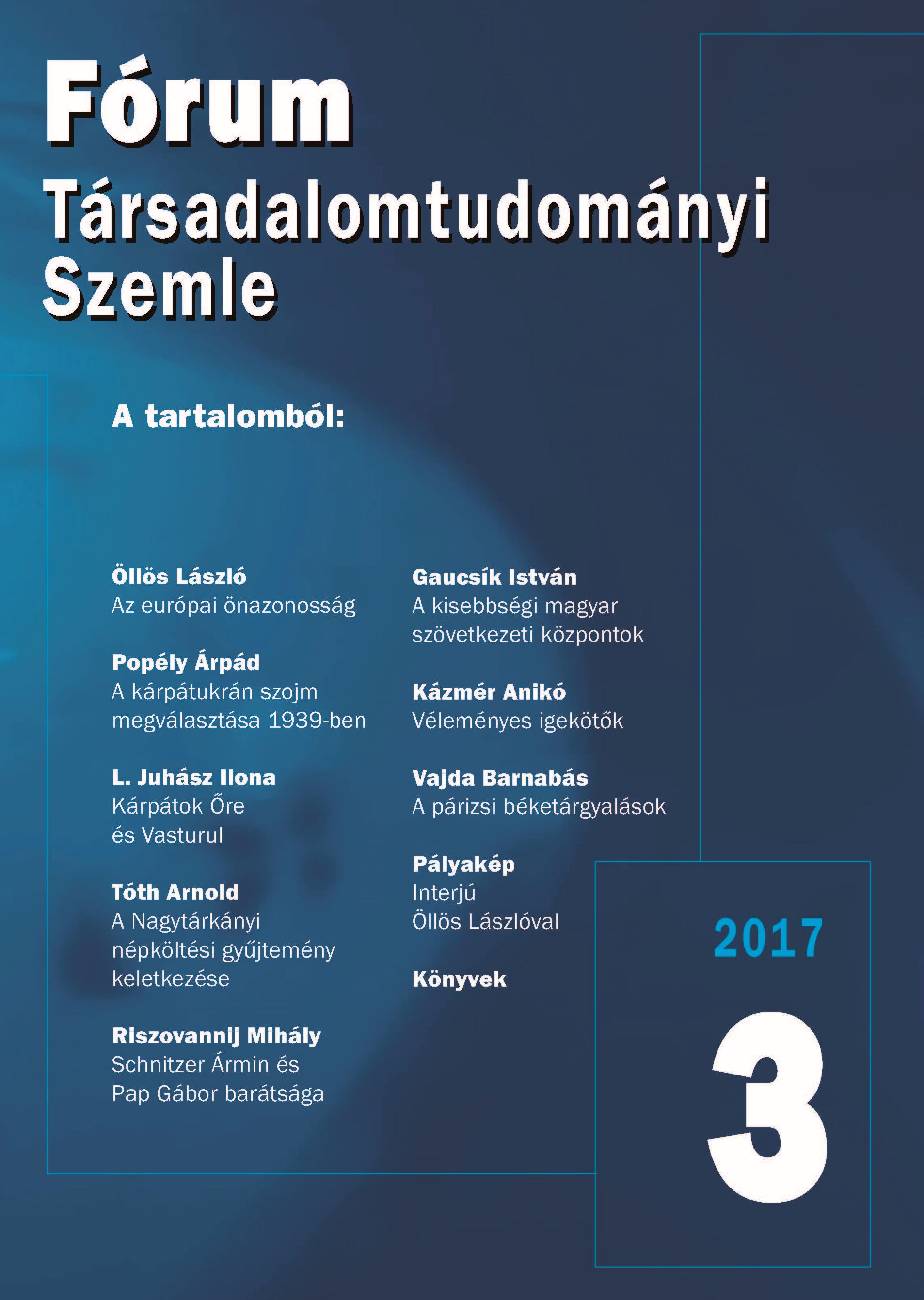Kárpátok Őre és a Vasturul
Guardian of the Carpathians and Iron Turul
The Rebirth of a First World War Statue Type with an Updated Ideological Message
Author(s): Ilona, L. JuhászSubject(s): Ethnohistory, Pre-WW I & WW I (1900 -1919)
Published by: Fórum Kisebbségkutató Intézet
Keywords: revival;World War I (The First World War); monuments;symbols;national myth;national legend;military romance
Summary/Abstract: During World War I, there was an initiative starting in Vienna to set up a wooden statue for charitable purposes, for which people could buy nails or sheet irons for different sums, and the money thus collected was used to support war orphans, war widows, disabled veterans etc. The Austrian example was followed on the territory of Hungary too, and, among others, in Kolozsvár there was set up a statue named “Guardian of the Carpathians”, and the “Iron Turul” in Nyitra. After the war these statues were removed by the new power and were forgotten by the public as well. However, over the last few years we can witness a kind of rebirth of the statues: they have been remade – the Guardian of the Carpathians even in several (3) copies – on the basis of utterly different ideological considerations, and set up elsewhere than at their original place. The very first copy of the Guardian of the Carpathians in Hungary (in Szilvásvárad) gained a new function as a symbol of national cohesion, the second one, in Dunakeszi, as a Trianon memorial, while the third one, located in Szeklerland, Romania (in Csíkcsomortán), commemorates the Battle of Pozsony. The Iron Turul of Nyitra was set up again in Alsóbodok, a village situated in the Zobor Region, Slovakia. This study examines these new statues, explores the old and new myths and rituals they are associated with, and looks into the message etc. they transmit.
Journal: Fórum Társadalomtudományi Szemle
- Issue Year: XIX/2017
- Issue No: 3
- Page Range: 45-87
- Page Count: 45
- Language: Hungarian

